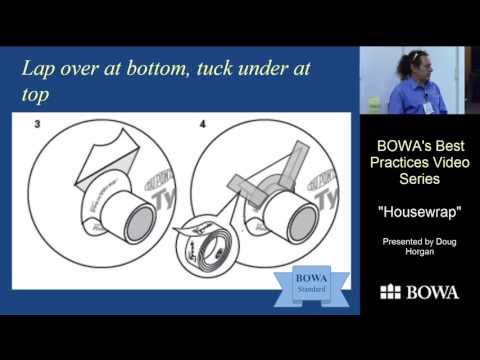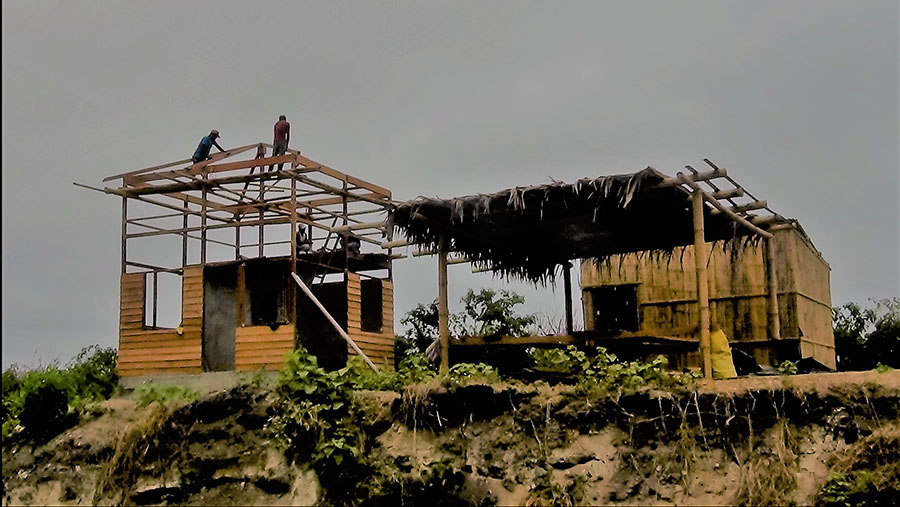In this episode of WxTV, Ben demonstrates several areas of containment for lead paint. But there are more lead safe rules than what most remodelers are aware of.
The DOE has a lead rule, too — the Lead Safe Weatherization Rule.
EPA's RRP Rule is in effect if the work to be done disturbs at least 20 square feet of painted material.
Under the DOE's LSW rule, you need to contain the work area regardless of the size of the disturbance.
Method 1: Bare minimum under both rules: 10 feet of plastic surrounding the disturbance.

This setup works well in good weather, when there is enough room to spread 10 feet of plastic on the ground surrounding the workspace. It is only good for short jobs that can be set up and taken down in a day.
Lay out the plastic, secure it to the house, create a curb at the far and, and get to work.
Method 2: Trough under window

Scalable in size and height, excellent for windy conditions, great for small jobs.
The frame is made with PVC pipe. The ends are fixed, and the pipes that separate them can be any length. Here, they're about six feet long.
Roll out enough plastic for the length of the trough (6 feet) and add a couple of feet on each end for folding the sides over.
Secure with spring clamps.
Method 3: Plastic lean-to

Using ZipWall poles, Ben connects plastic sheets from the top of the wall to ten feet away from the bottom of the wall to form a triangle with the house and the ground. Then he fills in the triangle ends.
Clamps are great for securing the plastic to the poles.
Make sure the wall plastic and floor plastic are sealed to each other with duct tape.
For a door, they use a stick-on zipper. Place the zipper door on the leeward side of the containment tent.
Make sure any overlaps of the plastic face the leeward side also.
Vertical containment such as this is required if you can't get 10 feet of plastic on the ground. It is also great for inclement weather like rain, snow, and wind.
Method 4: 2x4 wall tent

Another vertical containment method, the wall tent is easier to build than a lean-to. You can use 2x4s and scrap plywood for gussets at the joints.
You can also buy collapsable brackets if you plan to do a lot of this type of work.
Vertical 2x4s secured to the house support one end of the horizontal 2x4s, which support the "roof" plastic. The other end of the horizontal 2x4s are supported by ZipWall poles in the video, but they could also be 2x4s.
In this method, Ben demonstrates a duct-tape door slit with inner flap.
Show your customers you are a pro: Set up right,
—Thank you Montana Weatherization Center for doing such good work and sharing it with the crowd.











